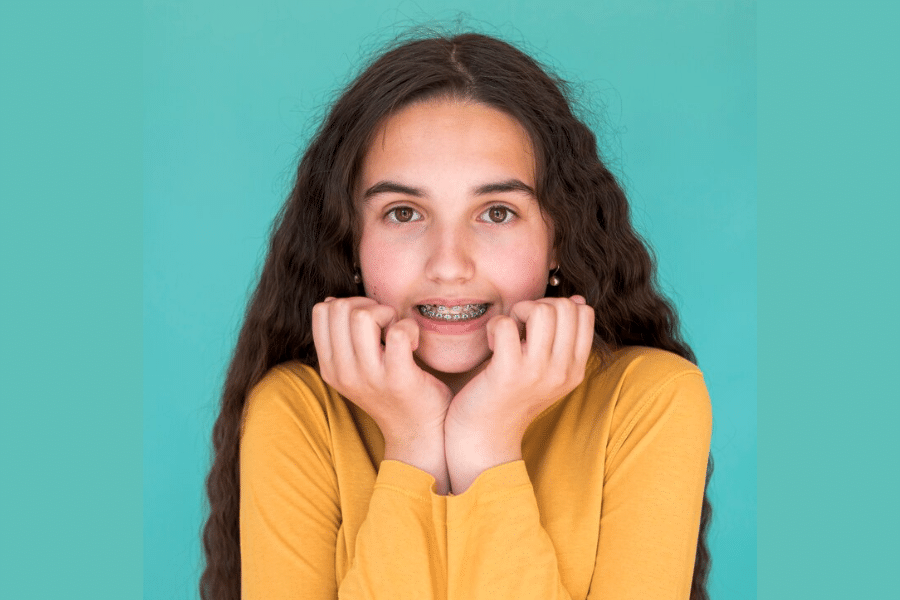Sleep-disordered breathing (SDB) is a condition that affects many children worldwide, impacting their quality of life and overall health. One of the treatment modalities gaining popularity in addressing SDB is Myobrace, a myofunctional orthodontic appliance. We will explore the role of Myobrace in managing airway and sleep-disordered breathing in children. Also, we will delve into what SDB entails, its effects on children, the functionality of Myobrace, and how it can potentially alleviate symptoms associated with SDB.
What is Sleep Disordered Breathing?
Sleep-disordered breathing (SDB) is a broad term that encompasses a range of breathing irregularities that occur during sleep. It includes conditions such as snoring, upper airway resistance syndrome (UARS), and obstructive sleep apnea (OSA). In OSA, which is the most common form of SDB, the airway becomes partially or completely blocked during sleep, leading to pauses in breathing or shallow breathing. This can result in disrupted sleep patterns and lower levels of oxygen in the blood, which can have a range of negative effects on health.
SDB is particularly common in children, where it can lead to issues such as poor sleep quality, daytime sleepiness, behavioral problems, and difficulty concentrating in school. It can also have more serious consequences if left untreated, including growth issues, cardiovascular problems, and developmental delays. Sleep-disordered breathing is common, with the American Academy of Pediatrics (AAP) Subcommittee on Pediatric Sleep estimating that 1.2% to 5.7% of children are affected by OSA alone (Gipson et al., 2019).
How Does Sleep Disordered Breathing Affect Children?

Sleep-disordered breathing (SDB), including conditions like obstructive sleep apnea (OSA), can have significant effects on children’s health and well-being. Children with sleep-disordered breathing (SDB) can experience a range of issues, from simple snoring to obstructive sleep apnea (OSA). This can lead to problems like growth issues, trouble with thinking and learning, and sometimes heart problems. SDB is most common in kids aged four to eight, and the symptoms can vary depending on the child’s age.
Chronic sleep disruption due to SDB can affect cognitive function, including memory, attention, and problem-solving skills. This can hinder a child’s ability to learn and perform well in school. SDB can lead to changes in the cardiovascular system, including increased blood pressure and heart rate. Over time, this can contribute to the development of cardiovascular diseases.
For example, infants might have noisy breathing and trouble sleeping at night, while toddlers and preschoolers might snore and breathe through their mouths. School-aged children might show behavioral problems or have dental issues. It is important to recognize these signs and seek help if needed to ensure children get the restful sleep they need for their health and development (Marcus, 2001).
How Does Myobrace Help in Sleep-Disordered Breathing?
Myobrace is a myofunctional orthodontic appliance that is designed to address the underlying causes of sleep-disordered breathing (SDB), particularly in children. It focuses on correcting poor oral habits that can contribute to SDB, such as mouth breathing, incorrect tongue posture, and improper swallowing. By promoting nasal breathing and proper tongue posture, Myobrace helps improve airflow and reduce the risk of airway obstruction during sleep.
Myobrace is a special device used in early orthodontic treatment for children with crooked teeth or bite issues. It is designed to help fix problems like a jutting jaw or a small lower jaw. This device can also correct things like a deep bite, crowded teeth, or how the top and bottom teeth line up. It even helps with how the lips close and the overall balance of the face. Myobrace is a great option for kids who need gentle correction for these issues (Achmad & Auliya, 2021).
Overall, Myobrace offers a holistic approach to managing SDB by addressing the underlying causes of the condition. It can help improve oral habits, facial muscle function, and dental alignment, all of which can contribute to better airflow and reduce the risk of airway obstruction during sleep. Parents and caregivers need to be aware of the signs and symptoms of SDB in children and seek prompt medical attention if they suspect their child may be affected. Early diagnosis and treatment can help mitigate the negative effects of SDB and improve the overall health and quality of life for affected children. However, it is important to consult with a qualified healthcare professional to determine if Myobrace is the right treatment option for your child’s specific needs.
References
Achmad, H., & Auliya, N. (2021). Management of Malocclusion in Children Using Myobrace Appliance: A Systematic Review. Annals of the Romanian Society for Cell Biology, 2120-2136.
Marcus, C. L. (2001). Sleep-disordered breathing in children. American journal of respiratory and critical care medicine, 164(1), 16-30.
Gipson, K., Lu, M., & Kinane, T. B. (2019). Sleep-disordered breathing in children. Pediatrics in review, 40(1), 3-13.



